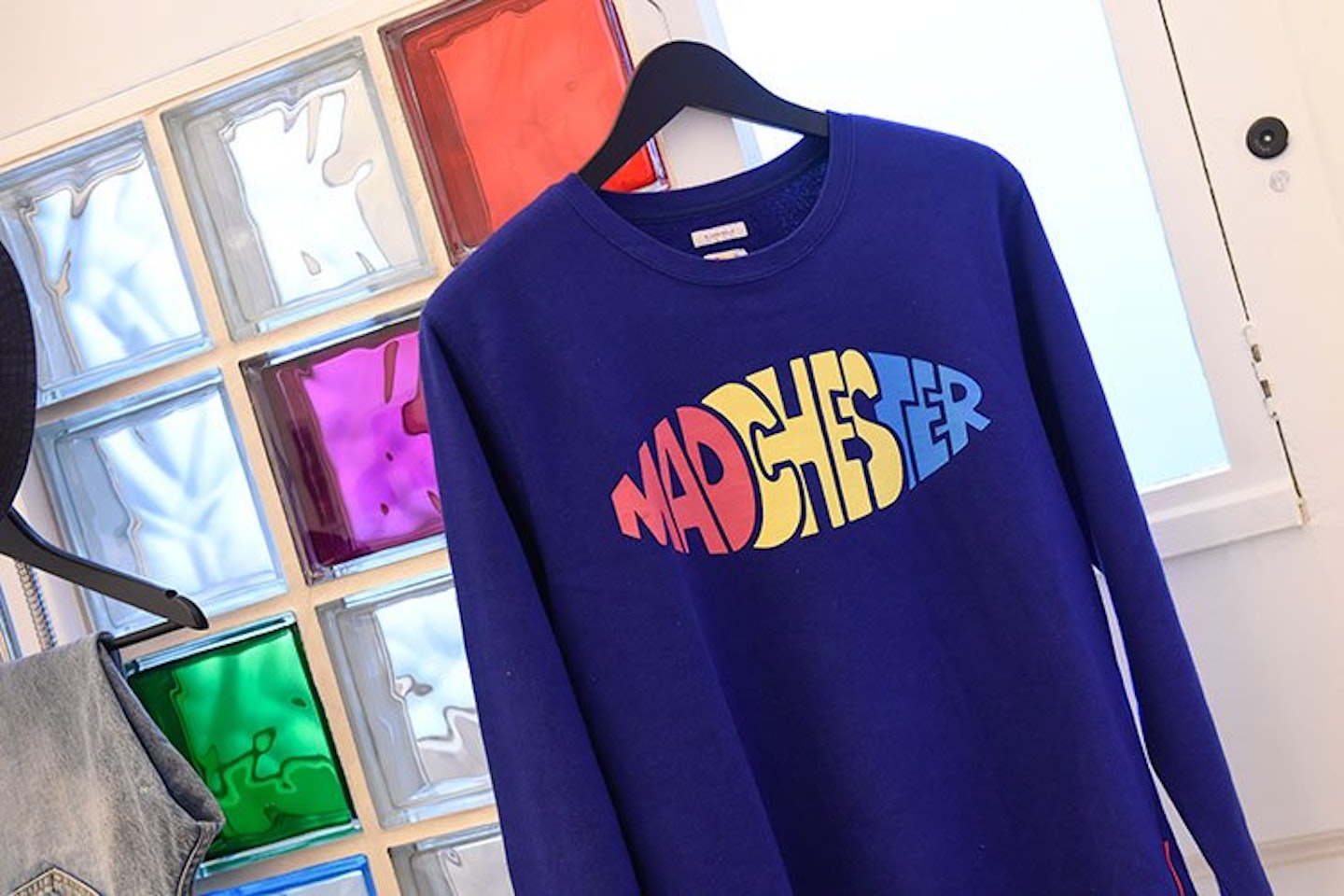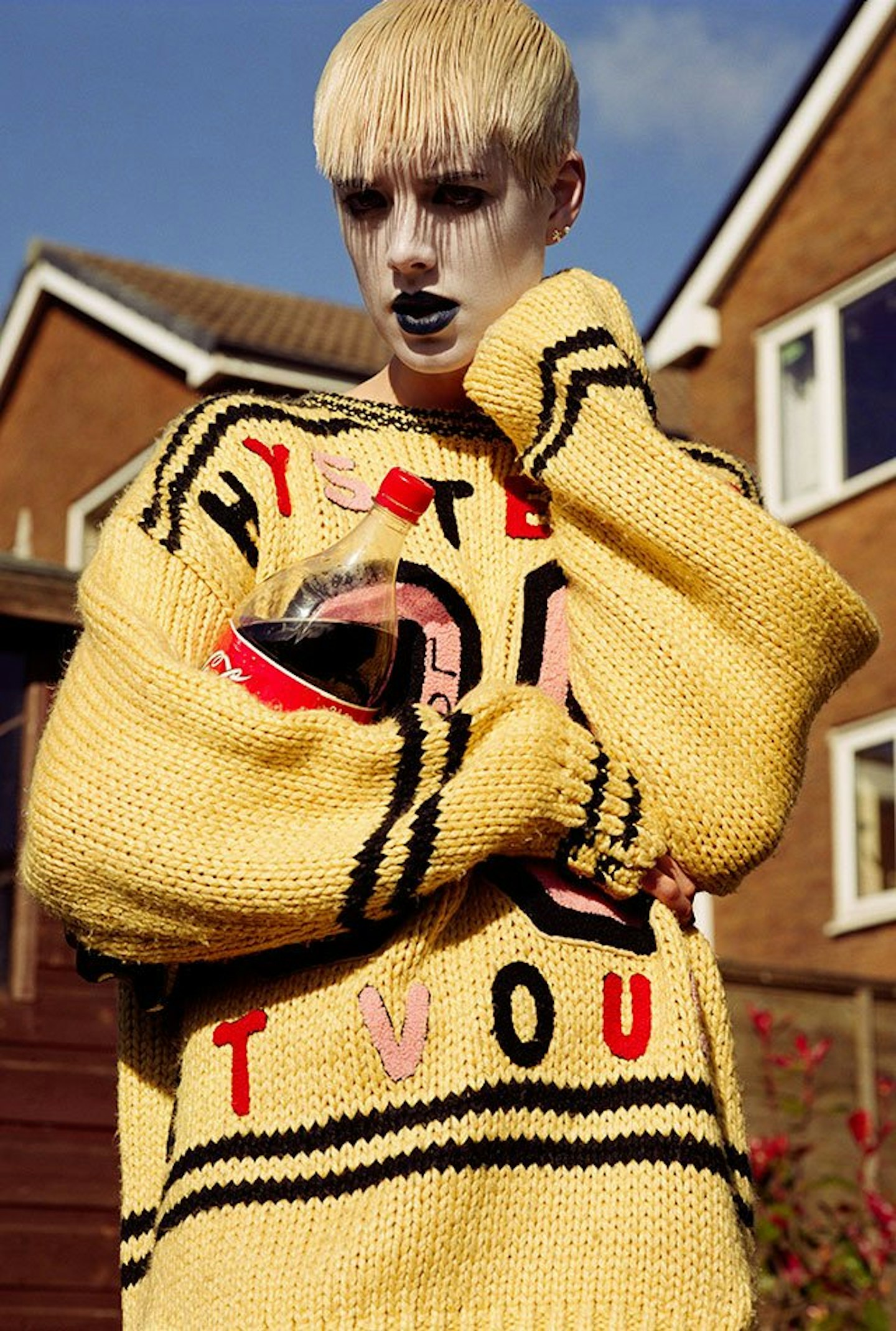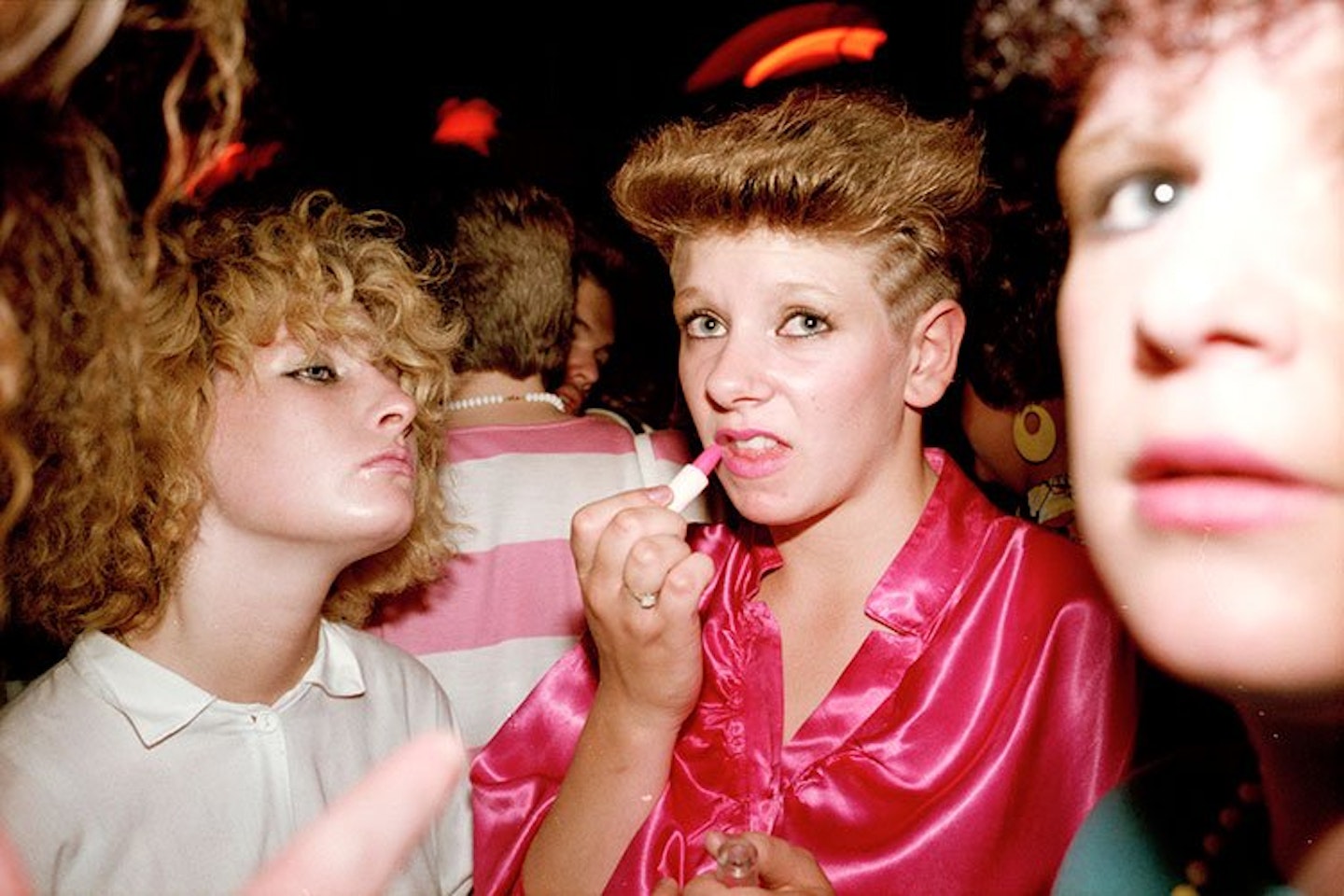Constantly and aggressively, we’re sold the idea that London is the UK’s fashion epicentre, from the fetishisation of Fashion Week on Instagram to the countless brand names that nod towards the capital (despite being as authentically ‘London’ as a Leicester Square branch of Angus Steakhouse.) Where, then, does that leave the North of England?

The idea of Northern style occupies an odd space in our collective imagination. It’s bucket hats, unibrowed Gallagher brothers and terraces filled with lads in immaculate sportswear; at the same time, it’s Gareth Pugh bringing his modern armour to the catwalk, or Raf Simons’ on-going infatuation with New Order record sleeves. It’s a constant source of inspiration for some of the world’s most talked-about designers (Virgil Abloh obsesses over the bold architecture of Manchester’s long-defunct Hacienda through his streetwear label, Off/White), but it’s also rich territory for misconception, stereotypes and even mockery - see every Daily Mail article ever filed from Ladies’ Day at Aintree races.
New to Somerset House’s East Wing is North: Fashioning Identity, an exhibition dedicated to exploring and unpicking the ideas, myths and images that have come to define ‘Northern-ness.’ While its latest home is south of Watford, the show (curated by SHOWstudio’s Lou Stoppard and fashion academic Adam Murray) started out at the Open Eye Gallery in Liverpool. ‘It’s rare for a show to start outside of London and then to travel here,’ says Murray. ‘We were really keen that it began in the North as the first outcome.’ A new venue means more space: Stoppard reckons there are ‘about 25 new works’ in this iteration, ‘some of which [they] really wanted to include last time.’ The idea germinated in the mid-to-late Noughties, when fashion editors clamoured to put Rochdale’s Agyness Deyn in front of ‘gritty’ industrial backdrops; in the context of garbled plans for a Northern Powerhouse and the Brexit referendum, it’s acquired a timely new resonance.

North is not overly concerned with what people are wearing (or have worn) in Manchester, Liverpool, Newcastle and Sheffield: instead, as Stoppard puts it, the exhibition is ‘about the way the North of England has been communicated through select photographs, clothes, collections. What we’re particularly interested in is how something moves from being a real document to something that is employed almost as a set or a backdrop, to signify certain things to an audience.’ The mix of archive images, magazine editorials, art objects and yes, actual clothes, invites us to put fashion’s myth-making process under the microscope: how does a documentary photograph of a washing-lined street in say, ‘30s Salford turn up 70 years later in a Vogue spread, starring the aforementioned Agyness Deyn and (un)-imaginatively titled ‘Angel Of The North’?
‘Jeremy Deller, who’s featured in North, said something to me during the research process that stuck with me,’ says Stoppard. ‘We were talking about whether he’s worried about stereotypes in his work, and he said, “I am, but stereotypes can be true,” and that phrase really stayed with me through the whole show.’ So, while Alice Hawkins’ The Liver Birds might seem at first glance to re-hash a particular Scouse stereotype – the hyper-glam woman, hair immaculate in rollers and designer clothes picked up at Cricket – its origins are actually far more interesting. The photo, published in LOVE magazine, echoes an older, documentary image from the ‘60s; the fact that Hawkins street cast her models in Merseyside further blurs that line between myth and real life (I like to think that the girls headed off to Seal Street with those professional-grade curly blows after their shoot wrapped up). ‘We’re not trying to say this is a conclusion and these are answers,’ says Murray. ‘What we’re doing is bringing things together that wouldn’t normally be placed that way – you wouldn’t normally get Mass Observation photos next to a very styled, constructed editorial fashion shoot.’
Alice Hawkins is one of an array of female photographers whose work forms part of North, part of an attempt to redress the implicit gender bias in the way we think about the North. ‘Typically, when you see celebrations of Northern England, it does tend to be focused on men: well-dressed, music industry, white, heterosexual men,’ explains Stoppard. ‘And while this show definitely does acknowledge that, we wanted to tell other stories too: to include some amazing female photographers, and particularly their visions of other women.’

Though the exhibition couldn’t be classed as a straightforward style retrospective, it still boasts major fashion credentials. Featuring work by of-the-moment Northern photographers Jamie Hawkesworth and Alistair Maclellan, as well as household names like Corinne Day and Glen Luchford, the contributor list reads like an industry who’s who – and, in the self-deprecating spirit of Northern understatement, the clothes themselves aren’t bad either. The standout pieces, though, are by two designers who’ve probably never disembarked from a Virgin Pendolino at Manchester Piccadilly station. Chicago-born Virgil Abloh is represented by his collaboration with Hacienda designer Ben Kelly, while the curators have also picked two pieces from Antwerp’s Raf Simons: a parka with a Peter Saville print from 2003, and a lantern bearing the distinct ‘FAC’ stamp, a prop from his most recent menswear show and a direct homage to Factory Records. It’s a fascinating paradox: that some of the most vital, relevant re-interpretations of Northern style are by international designers, for whom the North exists as a fiction. For Stoppard, ‘Raf is a really interesting example of someone who is obviously not British and not Northern, but has this long-standing obsession with Northern culture. I think it goes back to forms of experience: every creative person references the songs they heard when they were young, the people they wanted to be, the places they wanted to go to. I can see him as a boy imagining what Manchester was like, wanting to visit these clubs. There are many different versions of the North, and everyone has their own. It’s not always about lived experience, it can be about imagination.’
Liked this? You might also be interested in:
Topshop Makes Its Cubicles Non-Gender Neutral But Not Everyone's Happy
**Follow Katie on Instagram @katierosseinsky **
This article originally appeared on The Debrief.
-Alasdair-McLellan_620x349.jpg?ar=16%3A9&fit=crop&crop=top&auto=format&w=1440&q=80)